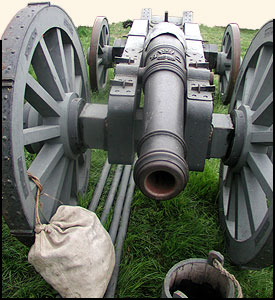 |
Co$t of Arti££€r¥ |
 Think 'artillery' and of course the image springs to mind of the artillery piece
itself, likely already set up with a gunnery crew. A lot more came with
those artillery pieces. A lot more! Reviewing the figures, one can
appreciate the cost involved for besiegers to bring up artillery to pound a
fortification into submission. And one can therefore understand why
besiegers became less accommodating to any surrender terms after they invested so much
to bring up their cannon. Examples from the French Civil/Religious Wars:
Think 'artillery' and of course the image springs to mind of the artillery piece
itself, likely already set up with a gunnery crew. A lot more came with
those artillery pieces. A lot more! Reviewing the figures, one can
appreciate the cost involved for besiegers to bring up artillery to pound a
fortification into submission. And one can therefore understand why
besiegers became less accommodating to any surrender terms after they invested so much
to bring up their cannon. Examples from the French Civil/Religious Wars:
Fall, 1568: The Duke of Anjou came to the siege of Châtellerault with a properly equipped and provisioned 20-gun artillery train. To bring those twenty pieces up and then crew them, 2,620 personnel were required, among whom were 241 Arsenal of Paris personnel, 1, 814 pioneers, and 316 teamsters to control 1,653 horses. Of those horses, 348 were draft for pulling the cannons, 782 more horses to pull 192 wagons with 5,000 cannonballs plus powder. But additional wagons were required: 41 to carry tools, forges, spare parts, tenting, rope, lead, etc., 20 wagons for the baggage of the grand master and his principal officers, and 30 wagons for pontoon bridge sections. Four-fifths of the entire train was support and merely a fifth was for the firing part.
December, 1567: Royal army paid to deploy 22 artillery pieces with 2,612 personnel and 927 horses.
1573: For the Siege of La Rochelle, the Royal Army brought up 42 artillery pieces with 354 Arsenal of Paris personnel, approximately 220 teamsters and 4,350 pioneers. Those three groups alone added up to nearly 5,000 men. And the siege train in transit stretched along six miles of road.
